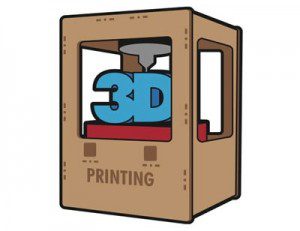Contributing Writer for Wake Up World
The age of 3D printing is here – and not only for common household products. Scientists have discovered a way to print a tissue-like material as well as an artificial ear, potentially revolutionizing how physicians approach the replacement of damaged areas of the body. Still in its infancy, 3D printing holds the promise of limitless possibility for consumers and medical teams alike as the technology becomes more advanced.
DIY fabrication
As reported in the Natural News article, “Fabrication power to the People! Why no government can stop the 3D printing revolution,” 3D printers are far from science fiction. Transforming how we view (and purchase) simple household products like bolts, tools, needles and even auto parts, this technology has enormous ramifications for the consumer marketplace. After all, if 3D printers become a common household appliance, scores of people can simply download a blueprint for whatever they need and create it using the printer. And with this technology rapidly advancing each day, the complexity of the objects will increase. Such is the case with a team of researchers at Oxford University who built a specialized 3D printer to create a material similar to living tissue.
[pro_ad_display_adzone id=”110028″]
Printing human ’tissue’ and ears
Scientists have developed a substance that could radically change the protocol for healing human skin. Created at the Oxford Department of Chemistry, the tissue-like material consists of water droplets resembling caviar that are protected by lipid molecules. The researchers “… aren’t trying to make materials that faithfully resemble tissues but rather structures that can carry out the functions of tissues,” according to Professor Bayley on the Oxford University website. Additionally, “This synthetic material can be designed to take on different shapes after it was printed. This resembles muscle movement,” states the news site RT: Question More. In the future, these “droplet networks” may very well have the capacity to function as living tissues, rebuilding skin that has been severely injured.
Meanwhile, biomedical engineers at Weill Cornell Medical College in New York have printed artificial ears that are identical to the real variety in look, feel and function. Using a 3D printer, the researchers built an ear-shaped mold which was then injected with a structural gel. Production of the ear takes less than two days: Half a day to build the mold, one day to print, 30 minutes for injecting the gel and a final 15 minutes for everything to set. This is exciting news for the 1 to 4 children per 10,000 who are born with a deformity called microtia that impairs hearing due to a missing section of the outer ear. Those who have lost part of their external ear in an accident or from cancer can benefit from the technology as well. Prior to this development, replacement ears were constructed of a foam material or utilized a painful process of harvesting a rib from the patient. The final product of both appeared unnatural and did not work properly.
Article Sources
http://www.naturalnews.com/040282_3D_printing_Defcad_revolution
http://rt.com/news/printer-3d-synthetic-tissues
http://www.sciencemag.org/content/340
http://rt.com/news/3D-printer-artificial-ear
[pro_ad_display_adzone id=”110025″]
[pro_ad_display_adzone id=”110027″]
This was originally posted at Natural News






